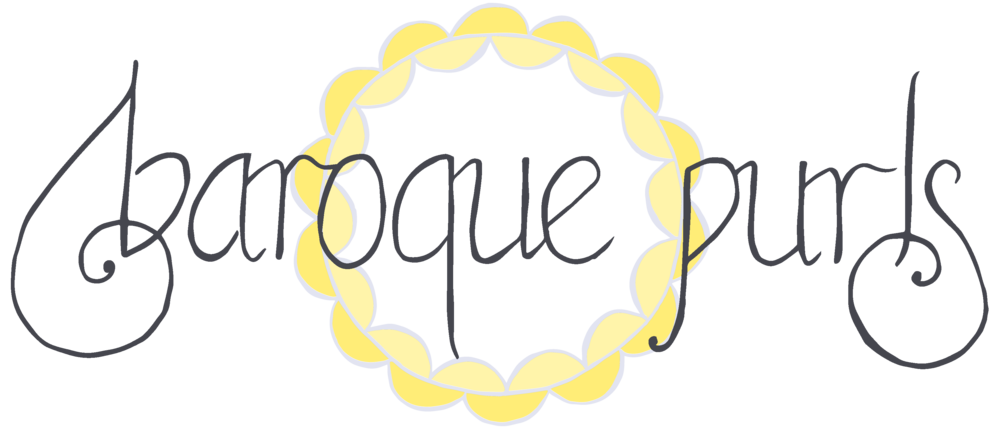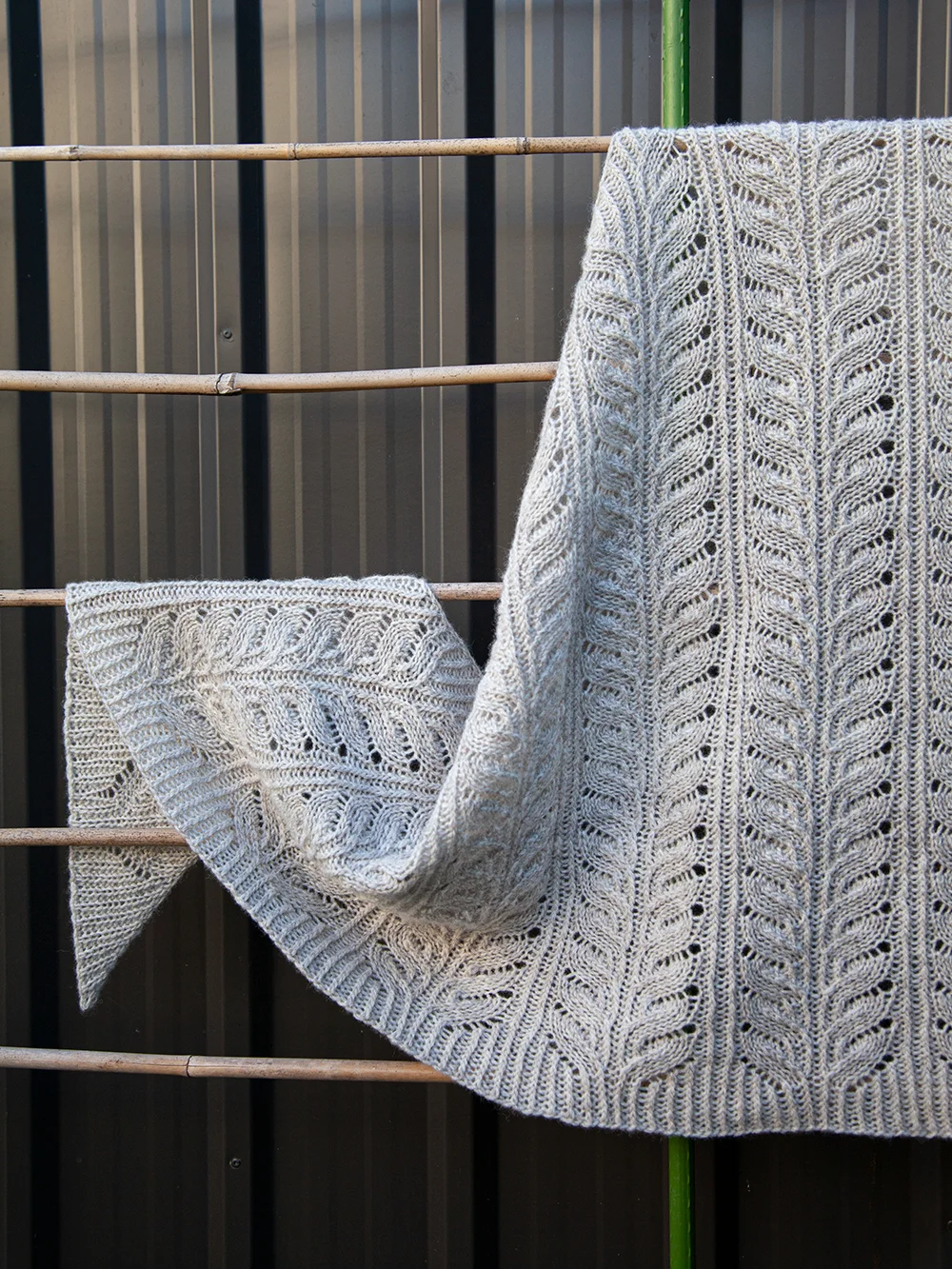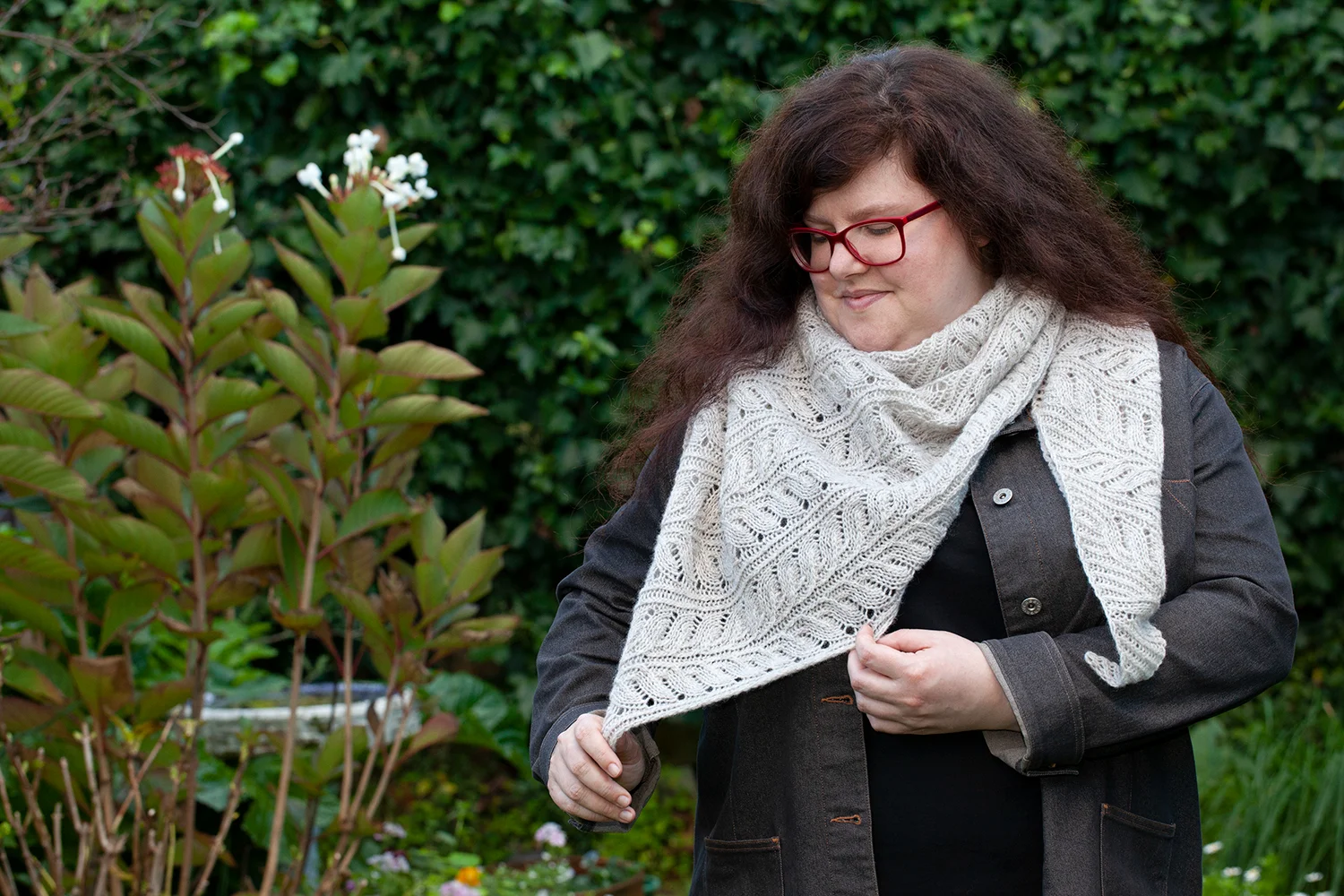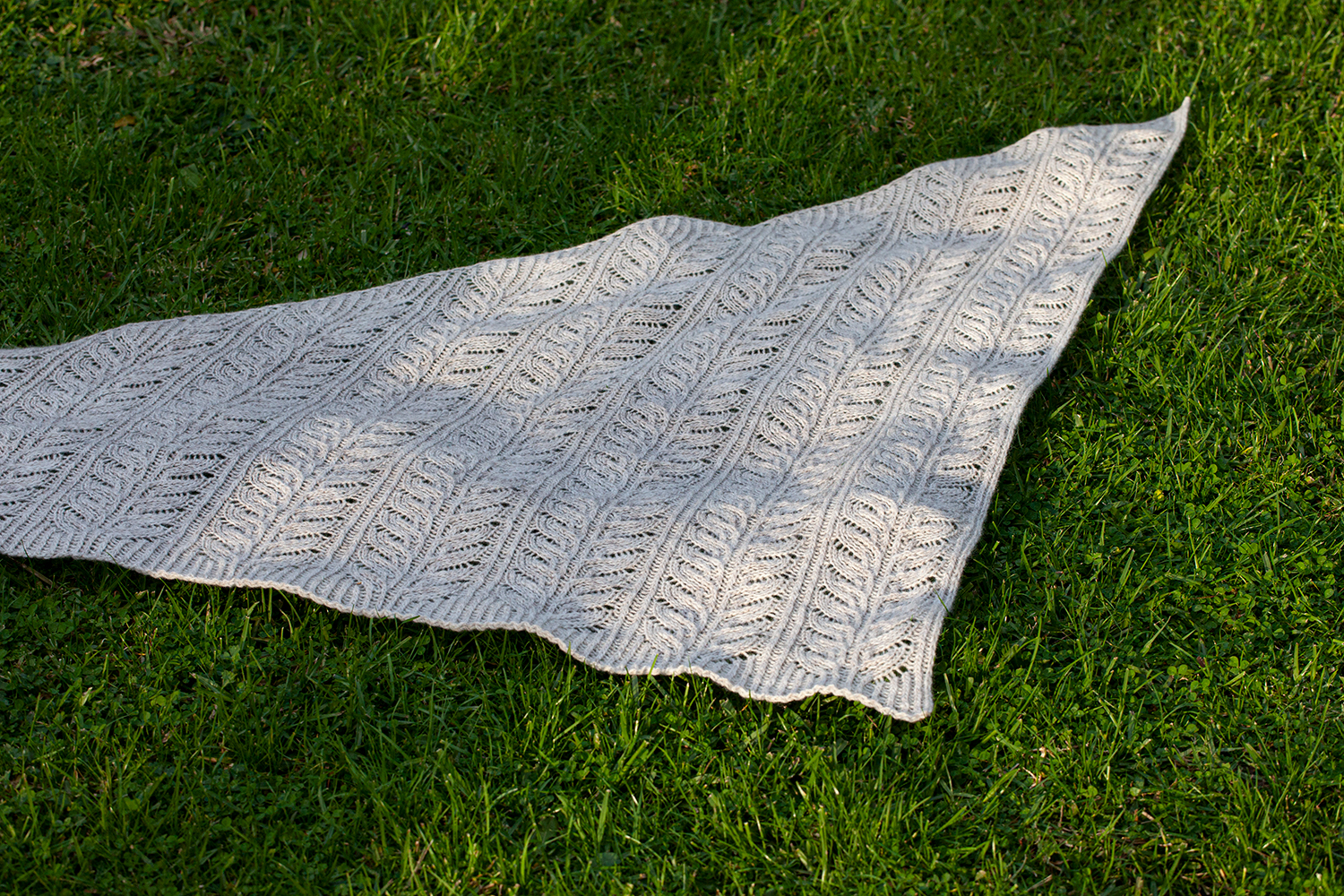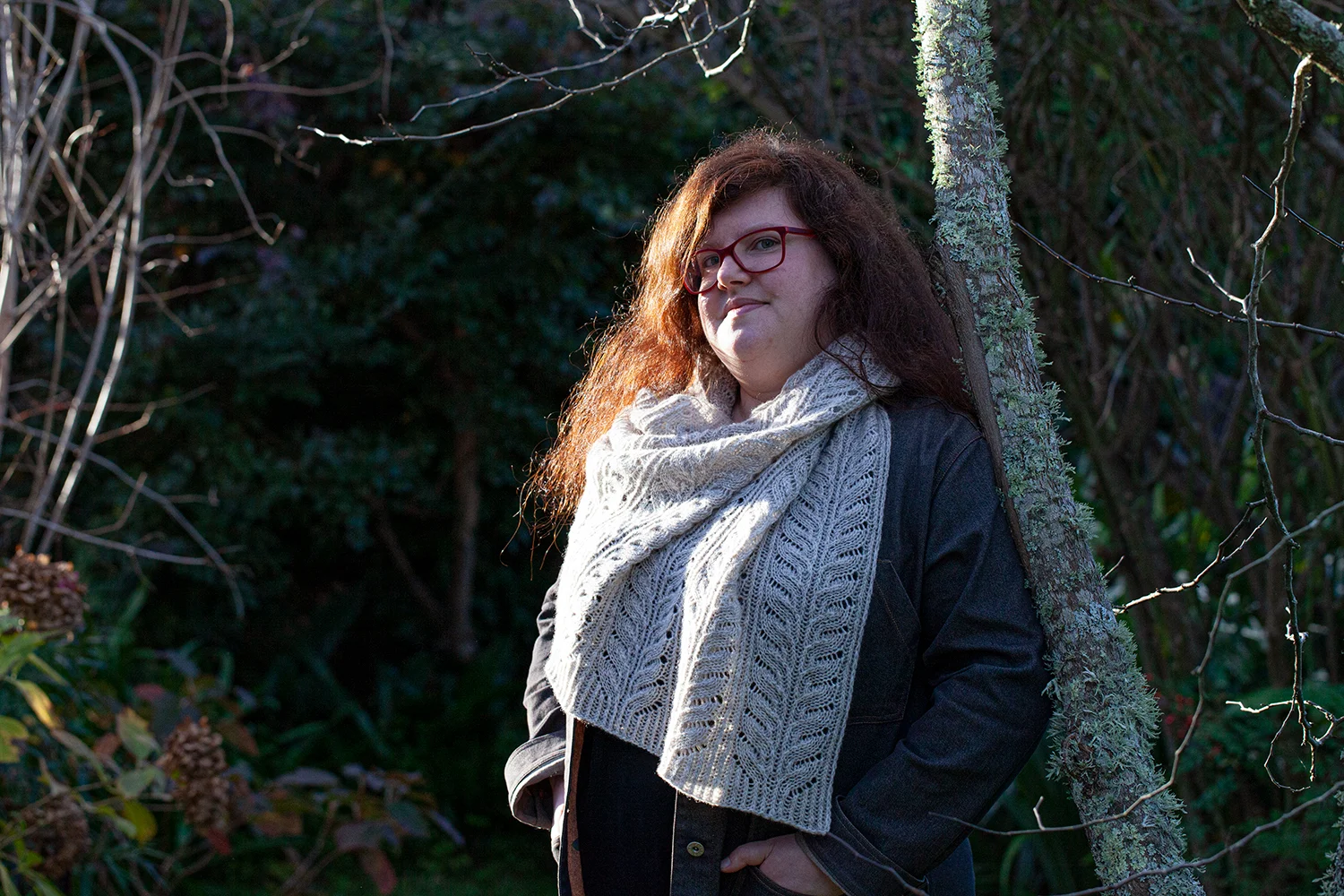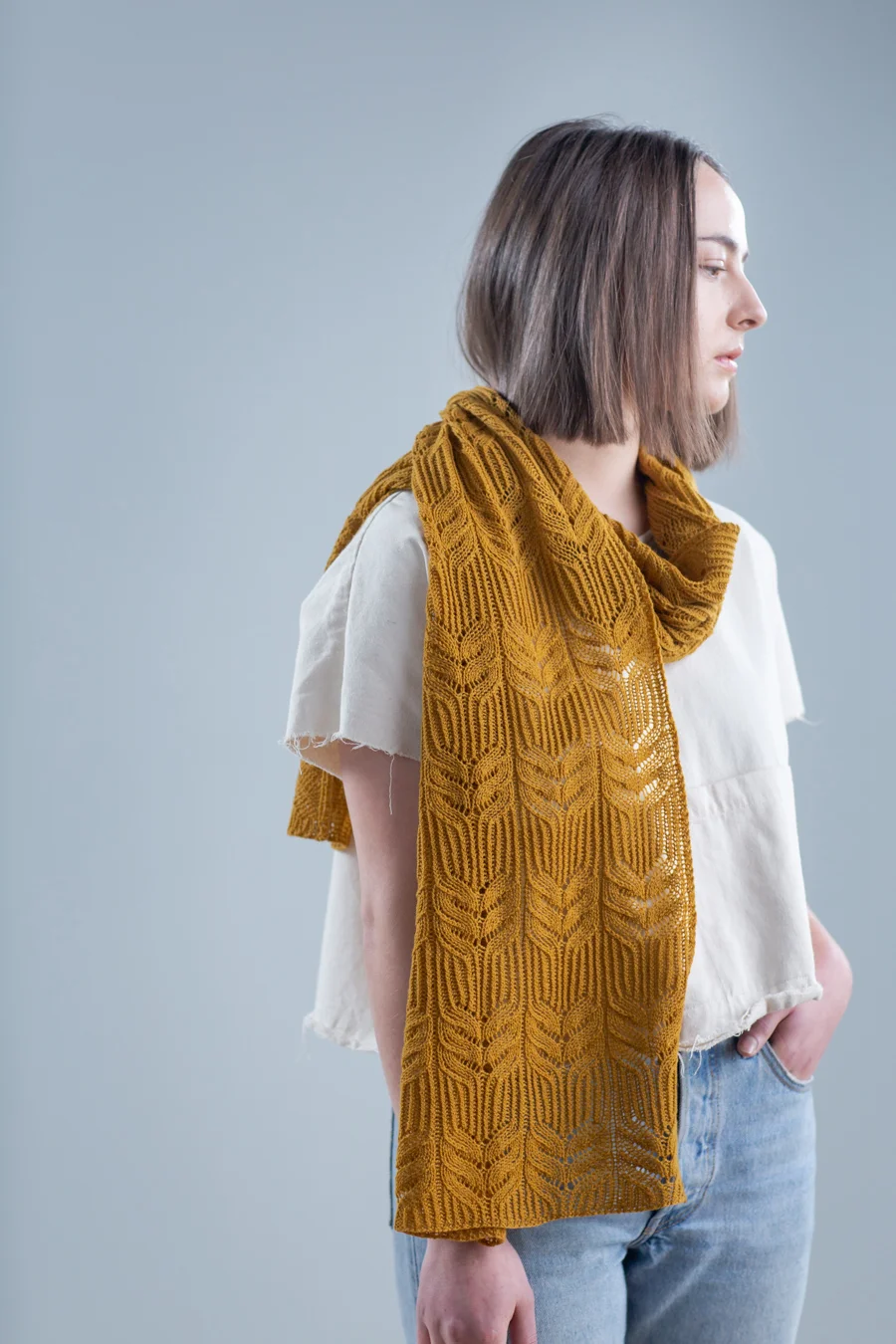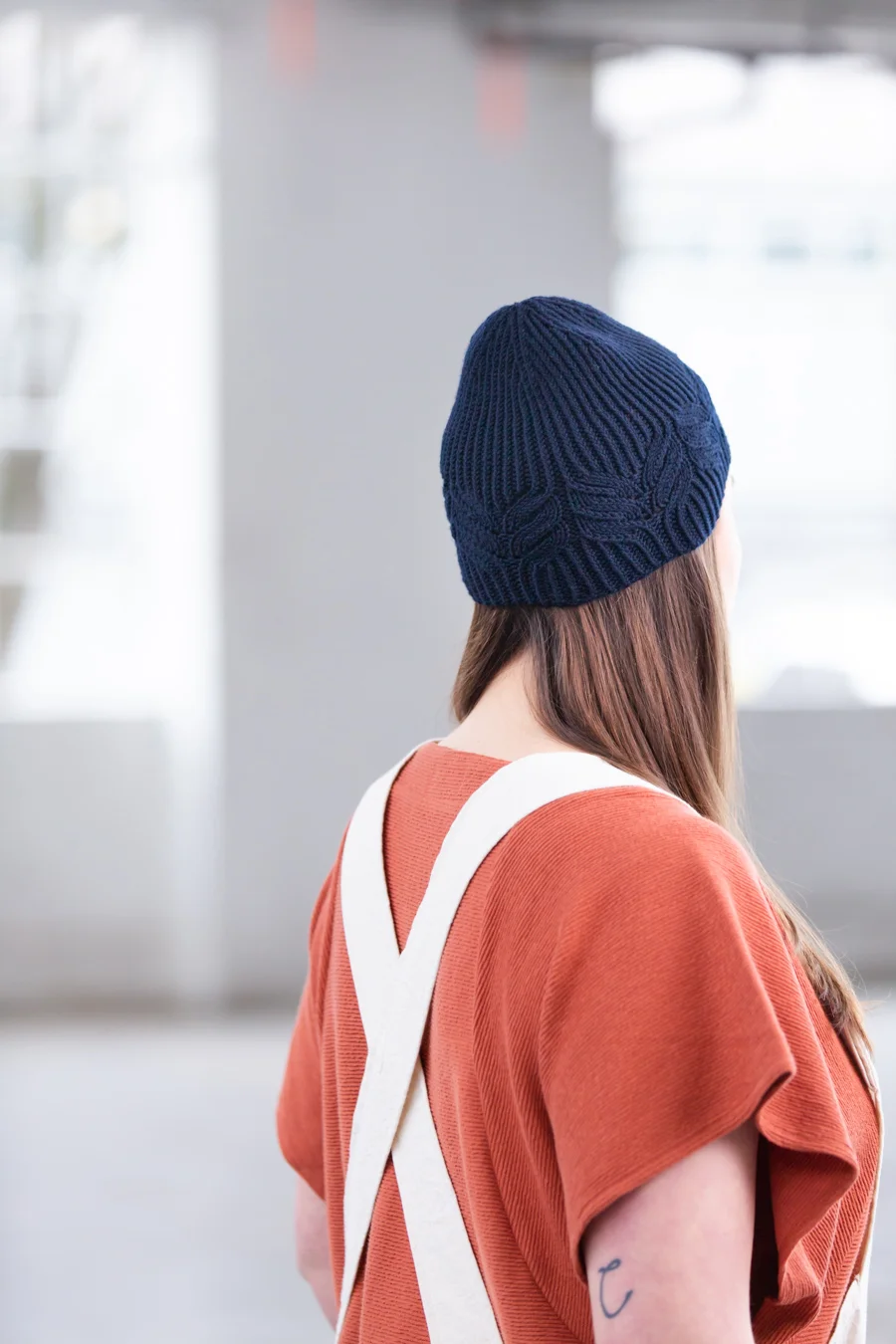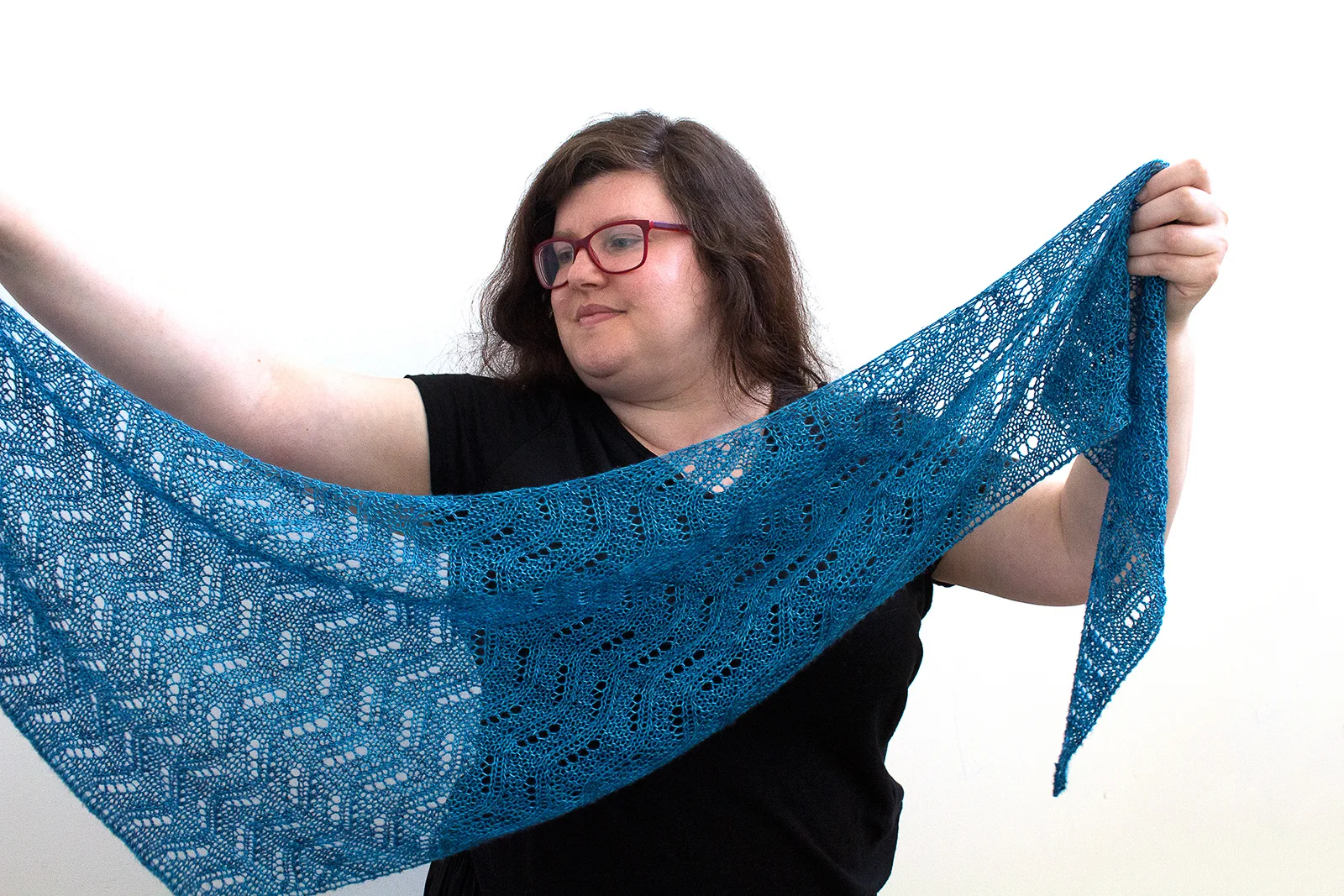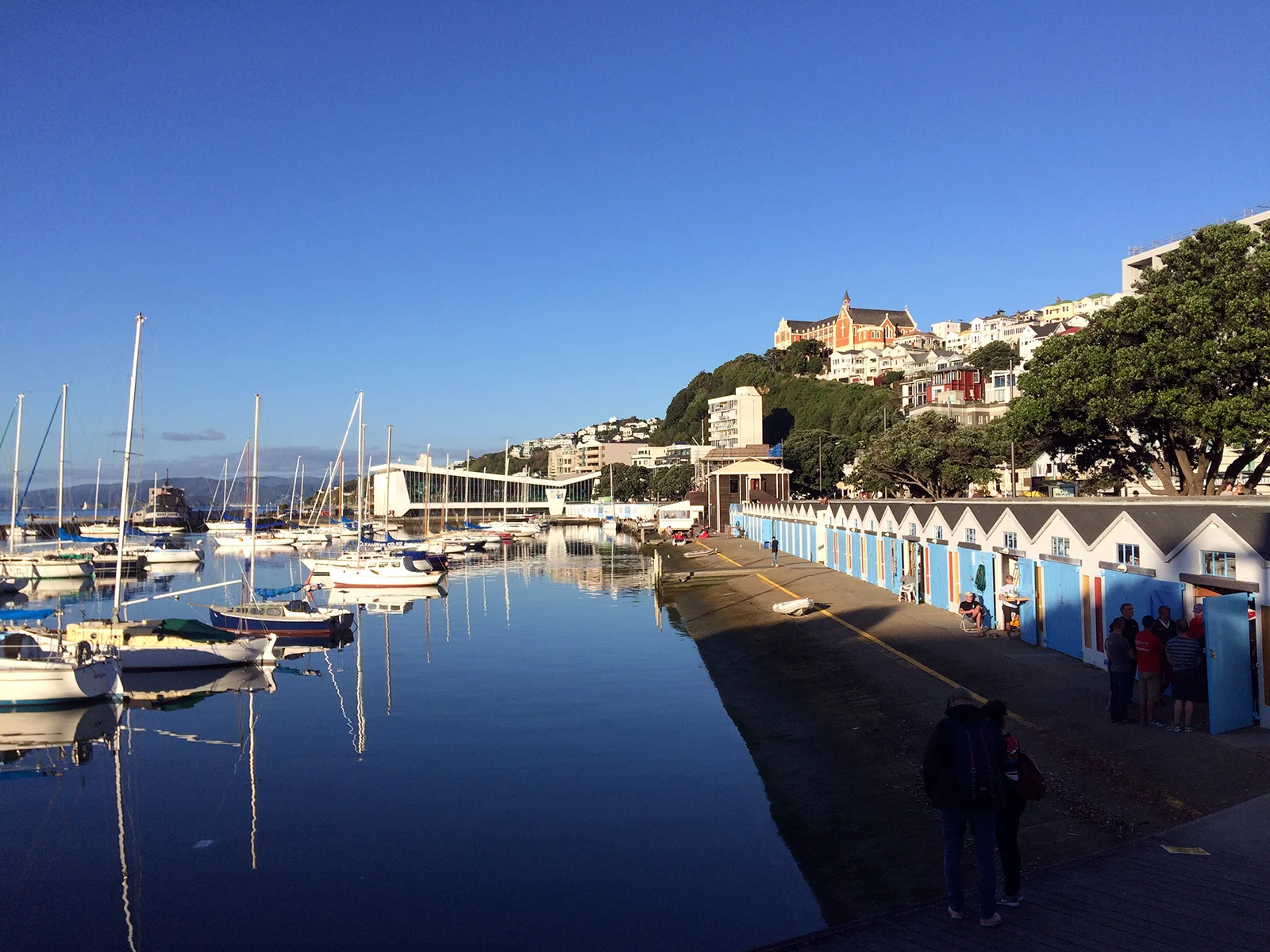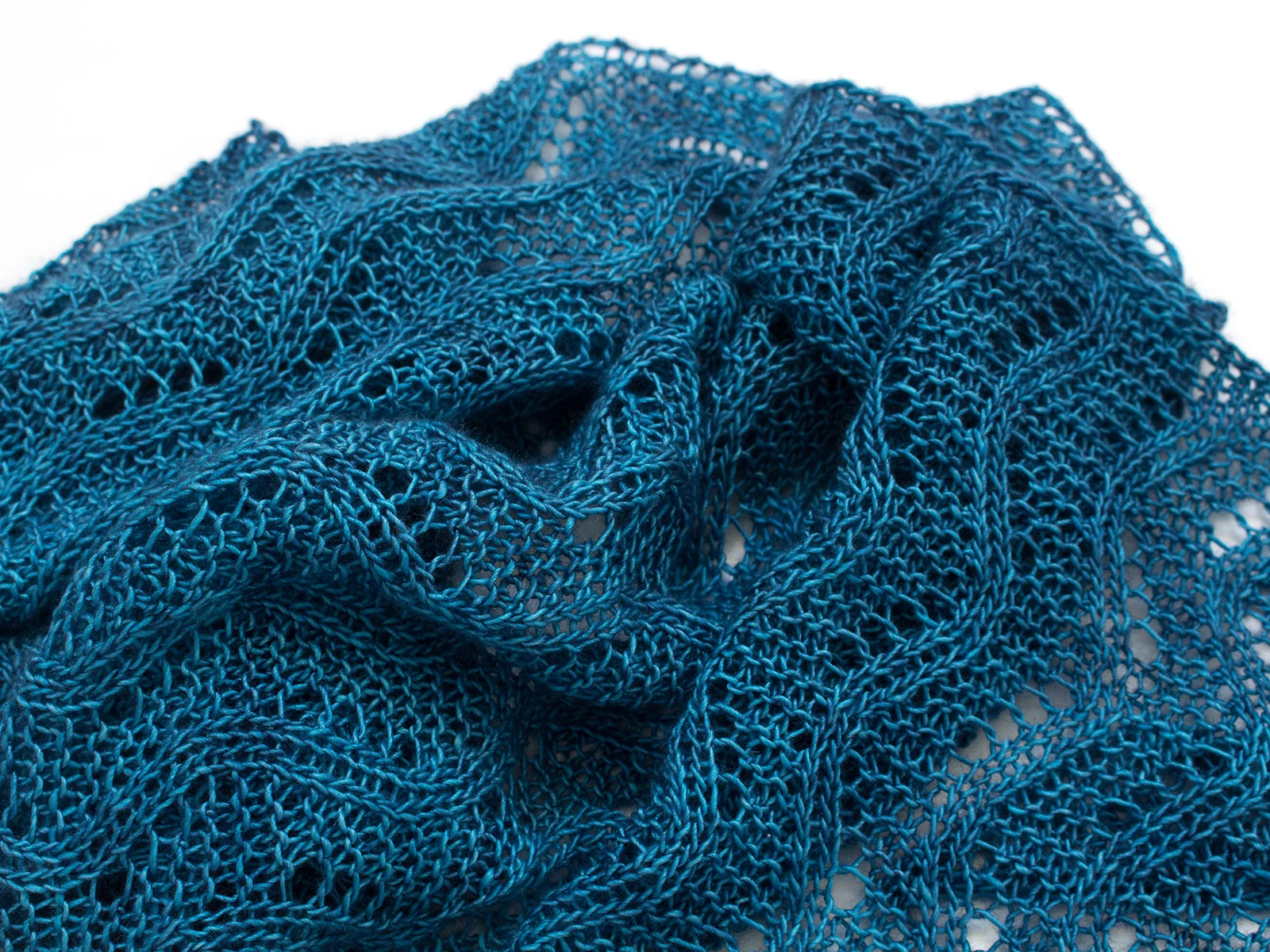Introducing my latest adventure in textured lace! The Beanstalk Shawl is a botanically-inspired triangular shawl in fingering-weight yarn. Its all-over lace pattern includes twisted stitches for crisp texture, and increases & decreases are worked on every row to create the gracefully-curving pairs of leaves.
The shawl’s stitch pattern grew out of the leaf-lace motif in my Ensata Scarf & Cowl and Hat designs (Ravelry links), which I couldn’t stop playing with further! I added more twisted stitches and stacked the leaves in unbroken columns, and through a lot of trial and error, found an elegant way of fitting the repeats into a triangular shawl shape.
The final effect is an abstract interpretation of growing vines or leafy plants, and makes me think of my Mum & Dad’s vegetable garden, which for its small size produces an awful lot of food. Their tomatoes are a particular point of pride, and I admit I actually enjoy their brussels sprouts (gasp)!
Do you ever find yourself enchanted with a certain type of stitch pattern? The combination of leafy lace and twisted stitches has been haunting me for a while now, and I don’t think I’m quite done yet - I still have a few more ideas charted out and ready to swatch…
The yarn I used to knit up my sample is Maniototo Wool’s Rough Ridge 4ply (90% Merino cross wool, 10% coloured Polwarth wool; 394yds/360m per 100g skein). This is an airy woollen-spun yarn with gentle heathering as a result of the inclusion of naturally coloured wool in the mix. I used two skeins of the undyed yarn for my shawl, but if you’re a colour-lover Mary has overdyed a few special shades to coincide with the launch of the Beanstalk Shawl pattern.
Techniques involved in the pattern include working lace increases and decreases on RS and WS rows (I have a tutorial coming soon for the WS decreases), and knitting and purling through the back loop to form the twisted stitches. I strongly recommend using stitch markers between repeats of the leaf-lace pattern, to help you keep track of the increases and decreases in the WS rows. Marking out the repeats also helped me get fully into the rhythm of the stitch pattern, which is worked over 6 rows.
Beanstalk Shawl features:
triangular shape, worked from one point to the triangle’s opposite side
all-over textured lace pattern including increases and decreases on every row
twisted stitches add crisp definition to the leafy texture
requires two skeins of fingering-weight yarn (shown in Maniototo Wool’s Rough Ridge 4ply), and 10 stitch markers
suitable for solid, semi-solid, or gently-speckled fingering-weight yarn
one size, easy to alter by changing the number of repeats
pattern includes full written instructions as well as charts.
Find out more about my Beanstalk Shawl pattern, including Ravelry and Payhip purchase options.
